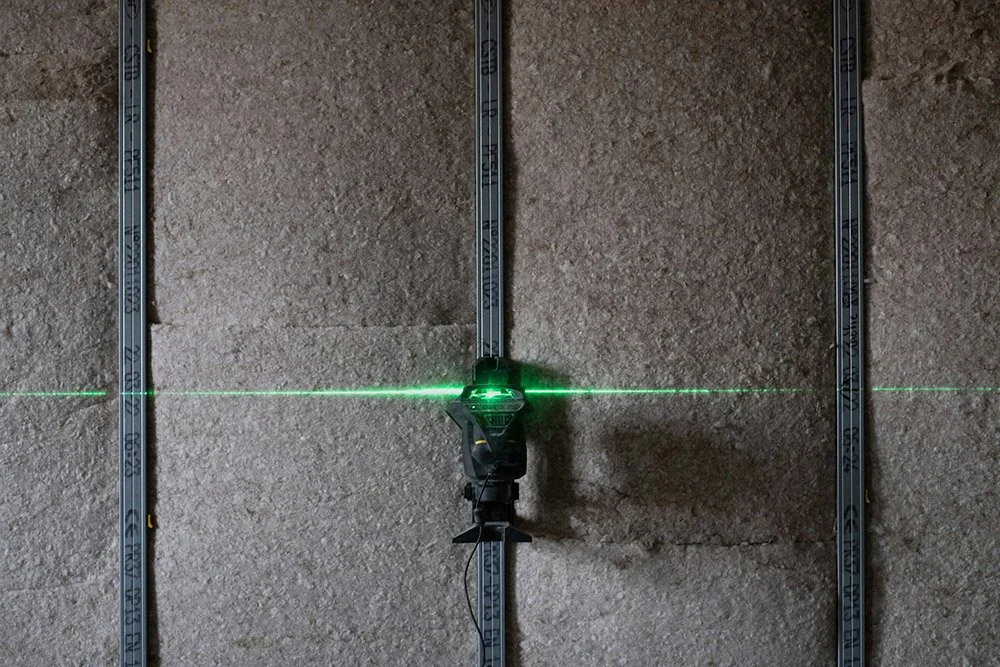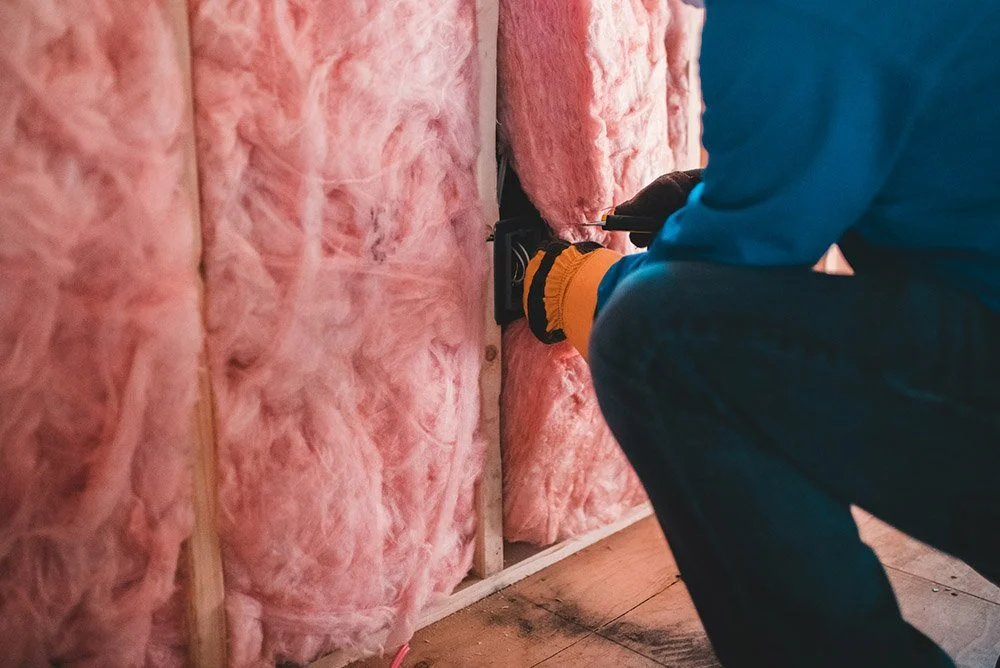Introduction: Why Proper Basement Insulation in Calgary Matters
Insulating your basement is not simply a construction step — it’s a critical investment in the comfort, efficiency, longevity, and profitability of your property. Whether you’re preparing to convert your basement into a rental suite or simply upgrading your existing home envelope, high-quality insulation tailored to Calgary’s climate will yield returns far beyond energy savings.
1. Increased Comfort
A properly insulated basement allows for year-round usability, maintaining stable temperatures through Calgary’s extreme weather fluctuations. In winter, it keeps heat in; in summer, it helps regulate coolness, creating a temperate and inviting environment. Furthermore, insulating below-grade areas reduces thermal bridging — the loss of heat through uninsulated structural elements — enhancing overall comfort on all floors above.
2. Moisture and Humidity Control
Moisture is the hidden enemy of finished basements. Quality insulation, when coupled with vapour barriers and waterproofing, plays a vital role in maintaining a dry, healthy living space. It suppresses condensation, discourages mold growth, and protects structural materials from rot or degradation due to high relative humidity levels often present in below-grade spaces.
3. Enhanced Structural Integrity
In Calgary’s freeze-thaw climate, uninsulated or improperly insulated basement walls are vulnerable to thermal stress and moisture infiltration. These forces can compromise the integrity of foundations over time. Insulation stabilizes temperature and moisture levels around foundational materials, reducing long-term stress and enhancing the building’s durability.
4. Acoustic Isolation
A legal Calgary secondary suite demands a degree of privacy and acoustic isolation. Proper insulation materials help attenuate both airborne and impact sounds — reducing disturbances between floors, from outdoors, and across partition walls — thus increasing tenant satisfaction and improving overall livability.
Part 1: Thermal Insulation Considerations for Calgary Basements
Pre-Installation Preparations
Before any insulation is installed, surface preparation and moisture mitigation are paramount:
· Identify and seal all cracks and voids in the foundation using hydraulic cement, polyurethane caulk, or epoxy injections.
· Apply a surface sealant or membrane to resist vapour transmission through the concrete.
· Confirm no active water infiltration is present. If necessary, implement interior or exterior waterproofing systems.
Types of Insulation Materials for Interior Applications
Each insulation type offers unique advantages in below-grade environments:
· Fibreglass Batts or Blankets: Economical and easy to install, these require a moisture barrier and are best used in framed wall assemblies.
· Spray Polyurethane Foam (SPF): Offers superior air sealing and high R-value per inch. Closed-cell variants also act as a vapour barrier.
· Rigid Foam Board (EPS, XPS, Polyiso): Moisture-resistant with consistent thermal performance, ideal for direct application to concrete walls.
· Loose-Fill Fibreglass or Cellulose: Suitable for ceiling cavities but less common in basements due to moisture risks.
A framed wall assembly using spray foam or batts with rigid board behind is a popular hybrid approach. Don’t neglect basement floor insulation, especially over concrete slabs, to reduce radiant heat loss and increase comfort underfoot.
Vapour Barriers: Essential for Climate Control
Calgary’s fluctuating humidity demands proper vapour control. A 6 mil polyethylene vapour barrier over insulation minimizes interstitial condensation and protects organic materials. Be sure to:
· Overlap seams by 12 inches.
· Tape all joints with acoustic or vapour barrier tape.
· Seal around electrical boxes and pipe penetrations.
Cold Room Considerations
Rooms that remain unheated (cold storage rooms, for instance) must be thermally and vapour-separated from the rest of the suite. This includes installing insulation and vapour barriers on adjacent ceiling and wall assemblies.
Exterior Basement Insulation (Below-Grade)
While more complex and costly, exterior insulation offers advantages including uninterrupted thermal protection and reduced risk of interior condensation. As you consider secondary suite development, this may be the time to investigate this critical component of a comprehensive upgrade.
Common Exterior Insulation Materials Include:
· Expanded Polystyrene (EPS)
· Extruded Polystyrene (XPS)
· Graphite-Enhanced EPS
· Rigid Mineral Wool
· Polyurethane or Polyisocyanurate Boards
Exterior Installation Process
1. Excavation: Trenching to expose the foundation wall, often requiring professional equipment and utility checks.
2. Waterproofing Membrane Application: Bituminous coatings or sheet membranes are installed over clean foundation walls.
3. Insulation Attachment: Boards are mechanically fastened or adhered with compatible adhesives.
4. Joint Sealing: All seams are taped or sealed with polyurethane foam or compatible materials.
5. Protective Coating or Drainage Board: To prevent damage from soil or moisture.
6. Backfilling: With proper grading to direct water away from the foundation.
Note: This process should only be undertaken during dry seasons and is best left to professionals with experience in Calgary soil and frost conditions.
Understanding R-Value: What Calgary Requires
R-value represents the thermal resistance of an insulating material. The higher the R-value, the better it resists heat flow.
· Canada’s National Building Code recommends R-20 for below-grade walls in cold climates.
· Calgary Climate Zone (Zone 7A) demands insulation solutions tailored for long heating seasons and average winter lows of -15°C or colder.
Spray foam offers R-6 per inch, while fibreglass batts typically offer R-3.7 per inch. Rigid foam varies, with polyiso delivering R-6–R-7 per inch but losing some efficiency in colder temperatures.
Common Mistakes to Avoid
1. Poor Installation: Improper alignment, compression of batts, or missed sealing can result in thermal bridging and air leaks.
2. Neglecting Moisture Control: Skipping vapour barriers or installing them on the wrong side can trap moisture, leading to mold and structural decay.
3. Ignoring Floor and Cold Room Insulation: These areas are often overlooked but are crucial for consistent performance and comfort.
4. DIY Missteps: Without professional-grade air sealing and moisture management, even high-R-value products will underperform or fail entirely.
Part 2: Acoustic Insulation for Rental-Ready Basement Suites

Sound control in a rental suite is not merely a luxury — it’s a necessity. Calgary’s building codes stipulate minimum soundproofing thresholds, especially for interconnected dwellings. Two sound transmission types must be addressed:
· Airborne noise (speech, music, TV)
· Impact noise (footsteps, dropped items, furniture movement)
Soundproofing Strategies While the Ceiling Is Open
The most effective acoustic treatments happen before ceiling drywall is installed.
1. Rockwool or Mineral Wool Insulation
These dense materials absorb sound and fill joist cavities. Rockwool Safe’n’Sound is a popular product for ceilings and partition walls due to its non-combustibility and sound absorption performance.
2. Acoustic Drywall
Also known as soundproof drywall, these panels incorporate damping layers that reduce transmission better than regular drywall. They’re especially effective when used in double-layered applications.
3. Green Glue Compound
Applied between two layers of drywall, this viscoelastic damping compound converts sound energy into heat. Particularly effective for impact noise, it’s a must-have in premium soundproofing assemblies.
4. Resilient Channels
These metal strips create a decoupled interface between framing and drywall, interrupting the direct path for sound vibrations.
5. Flooring Underlayment
Acoustic foam, rubber, or cork underlays reduce impact noise from above — a major concern in rental conversions.
6. Acoustic Sealant
Used around penetrations, outlets, and along seams to prevent airborne sound leaks.
7. Mass Loaded Vinyl (MLV)
A dense, flexible sound barrier that can be stapled behind drywall or flooring to block a wide range of frequencies.
8. Acoustic Panels and Finishes
Add foam or fabric-wrapped panels post-construction to absorb echoes, especially in common areas.
9. Solid Core Doors and Soundproof Curtains
These inexpensive upgrades drastically reduce noise through doorways and windows.
Why Hire a Professional like Notorious Suites in Calgary?
Insulating a basement suite to meet thermal and acoustic goals — legally, efficiently, and effectively — is a complex task. Calgary building codes, environmental conditions, and construction constraints mean professional-grade execution is critical.
Key Advantages of Hiring a Specialist Contractor:
· Avoid Critical Errors: Improper vapour barrier placement or insulation gaps can lead to mold, condensation, and energy loss.
· Certified Acoustic Installation: Soundproofing systems must be carefully layered and sealed. Missed steps drastically reduce performance.
· Permits and Inspections: Professionals will pull the correct permits, meet fire and sound rating requirements, and ensure compliance with municipal codes. While there are many illegal basement suites, yours will not be among them. Peace of mind is crucial!
· Time and Labour Savings: Avoid lengthy DIY mistakes with a turnkey solution that includes design, material selection, demolition, installation, and finishing.
· Expert Material Selection: A professional understands which insulation system suits your specific foundation type, moisture condition, and acoustic needs.
· Notorious Suites can guide you as you apply for the Secondary Suite Incentive Program, which may substantially ease the cost of basement development!
Conclusion
Upgrading your basement into a warm, quiet, and rentable living space in Calgary is not just about finishing surfaces — it’s about building it right from the ground up. Proper insulation — both thermal and acoustic — is foundational to comfort, energy efficiency, structural health, and tenant satisfaction.
By investing in technically sound insulation systems and trusting specialists like Notorious Suites, homeowners can unlock the full potential of their basements with confidence!
